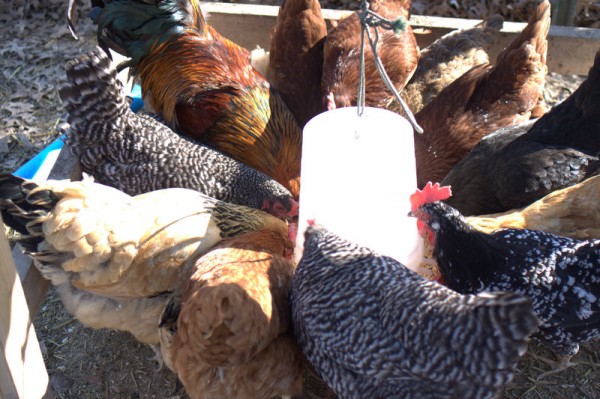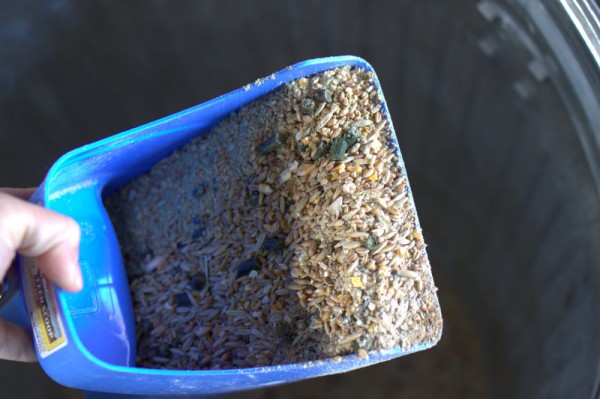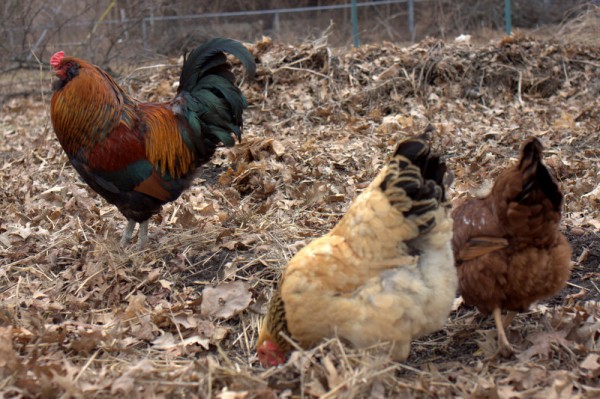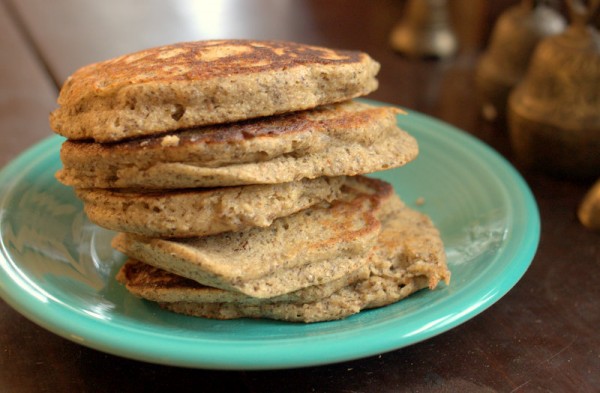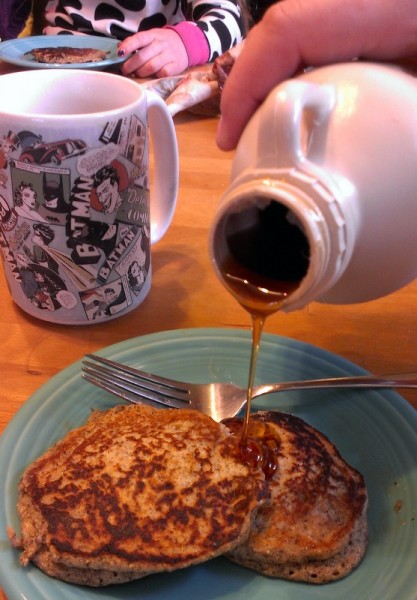When we started our flock of chickens with four birds, the cost and type of food didn't matter much. We bought a fifty pound bag of commercial feed about once a month from a farm store. If the hens spilled and wasted some or the price of feed fluctuated, it didn't make a big difference to us.
Now that we have fifteen chickens, things are different. They can eat a fifty pound bag of feed in less than two weeks. As soon as City Folk's Farm Shop opened, we switched to buying feed from them. We wanted to like their organic and non-GMO offerings, but with more powder than large pieces, our hens spilled constantly. Spilling feed is not only cash on the ground but the resulting mess combines with soil moisture and begins to ferment and stink. Yuck.
When City Folk's opened their new feed mixing station, I took a class with Denise Beno to learn about whole grain chicken feed. Denise shared advantages and disadvantages to whole grains, her philosophy to feed twice a day only what they can eat in fifteen minutes (no thieving by sparrows!), and several feed mix ratios. I was sold and mixed my own feed shortly thereafter.
The girls (and guy) seem to love it. Spilling still happens but they're more likely to eat what falls because it's in bigger pieces. We're going through less feed than expected and therefore it costs less than buying high quality pre-mixed food. Cleaning the hen house has become more pleasant because the poop from whole-grain fed chickens is less prolific and less smelly in our experience.
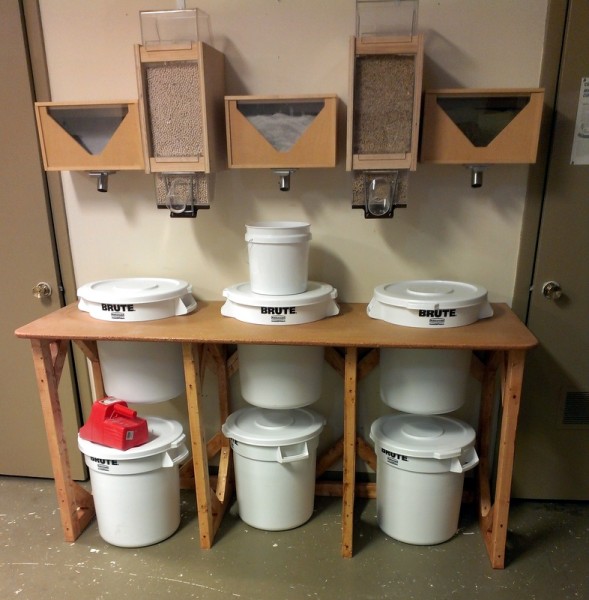
How To Feed Chickens Whole Grain
1. Use a recipe that provides a variety of grains, protein sources, and minerals. You may change the grain mix to include cheaper/more available grains in subsequent batches but try not to change too many things at once.
2. Provide grit, oyster shell, and fresh water at all times. Hens using whole grain will consume more grit and oyster than hens on commercial pelleted feed. I made a grit and oyster shell feeder using our pvc feeder design.
3. Transition slowly by mixing in the new feed:
- Week one - 3/4 previous (commerical) feed, 1/4 whole grain mix
- Week two - 1/2 previous feed, 1/2 whole grain mix
- Week three - 1/4 previous feed, 3/4 whole grain mix
- Week four (or whenever you run out of previous feed) - 100% whole grain
4. During this time, egg production may slow a little and/or eggshells may thin as the hens get used to eating the new food, grit, and shell. After four weeks, my girls were up to their regular production and shells are thick and strong again.
5. Experiment to determine how much feed you need. Denise recommended 1/3 pound per chicken per day, which would be 5 pounds per day for my flock but they're actually eating 3.5-4 pounds per day. The difference may be that some of my chickens are bantams and it's winter so they aren't expending much energy foraging. We also feed all the table scraps they will eat.
Rachel's Whole Grain Layer Feed Mix
Makes 50#
12.5# whole oats 12.5# wheat 12.5# cracked corn 1.5# fish meal 2.5# alfalfa pellets (not my hen's favorite and can be eliminated with good pasture) 7.5# whole soy beans 1 # mineral supplement

